Diane Landry (b.1958)
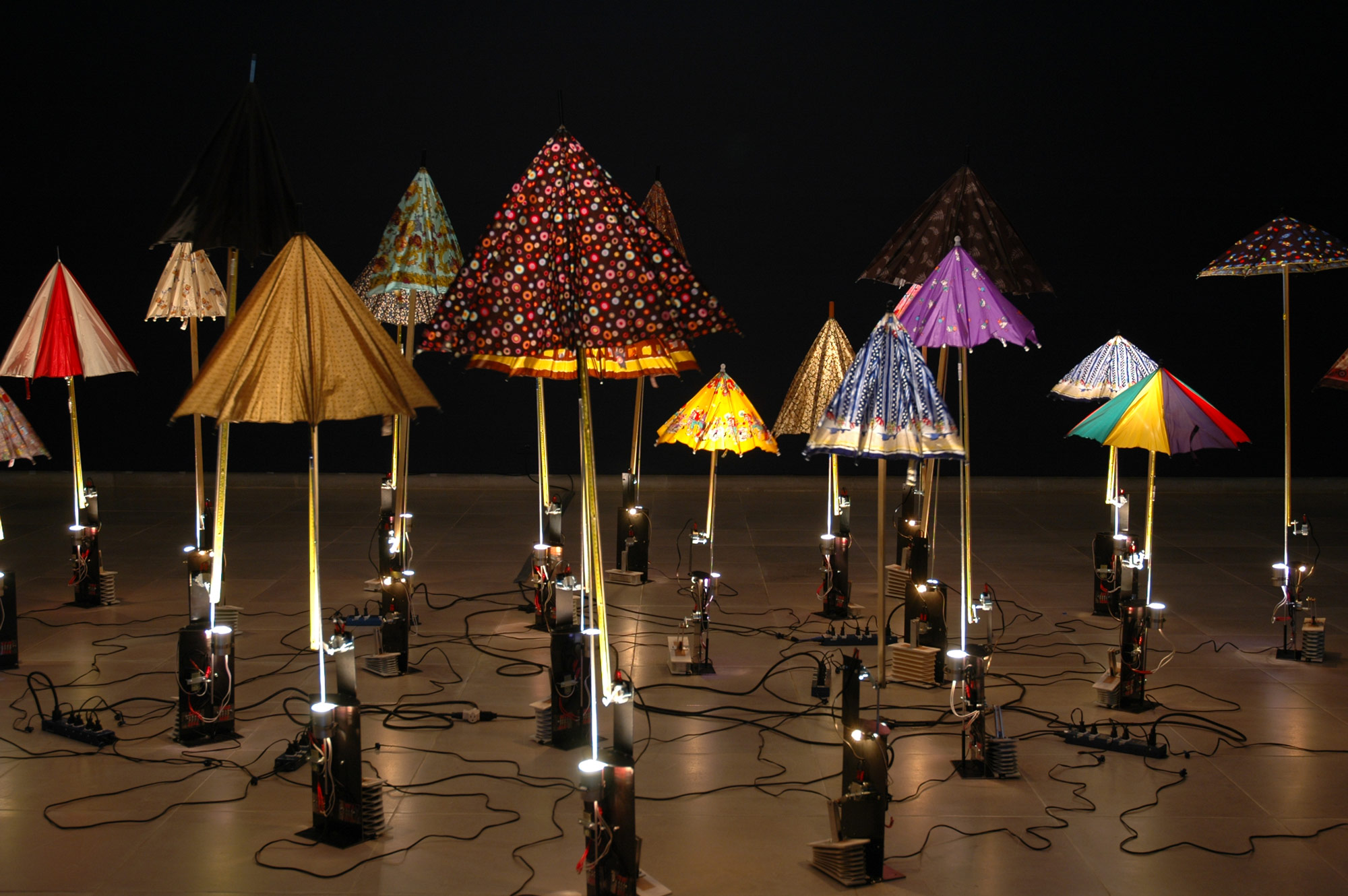
Diane Landry, École d’aviation (Flying School), 2000
Installation with automated umbrellas, harmonicas, motors, steel, cardboard, halogen lighting, MIDI controller, computer, 24 objects: 30 x 100 cm (variable widths), 100 x 220 cm (variable heights), 800 x 800 cm (ceiling projection)
Cameron Art Museum, Wilmington
The above video clip shows École d’aviation installed in the exhibition hi-tech / lo-tech at the Wood Street Galleries, Pittsburgh, 2004.
Born in Cap-de-la-Madeleine, halfway between Quebec City and Montreal, Diane Landry moved to the capital to study and eventually made it her adopted home. At the core of her artistic exploration are themes of time and movement, and her practice encompasses kinetic sculptures, performances, and installations that include automated sound machines. One of her most celebrated works, École d’aviation (Flying School), features twenty-four umbrellas that open and close like a slow breath, producing sounds and shadows. Whether Landry incorporates her own body in her performances or transforms recycled objects—such as can openers, turntables, or washing machines—in her installations, she creates intricate pieces that explore a poetic universe enriched by automated movements, musical sounds, and projections of shadows and light.
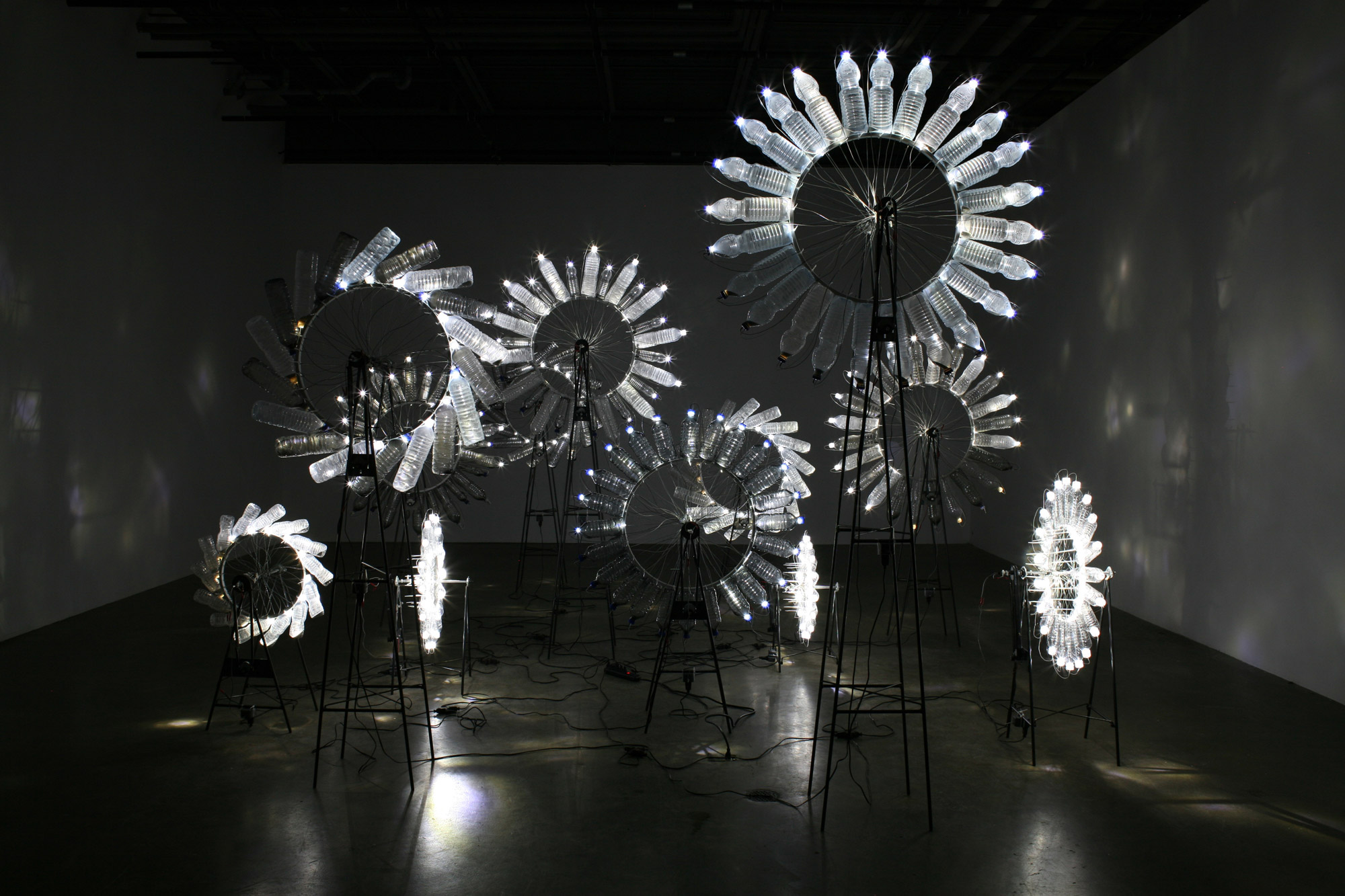
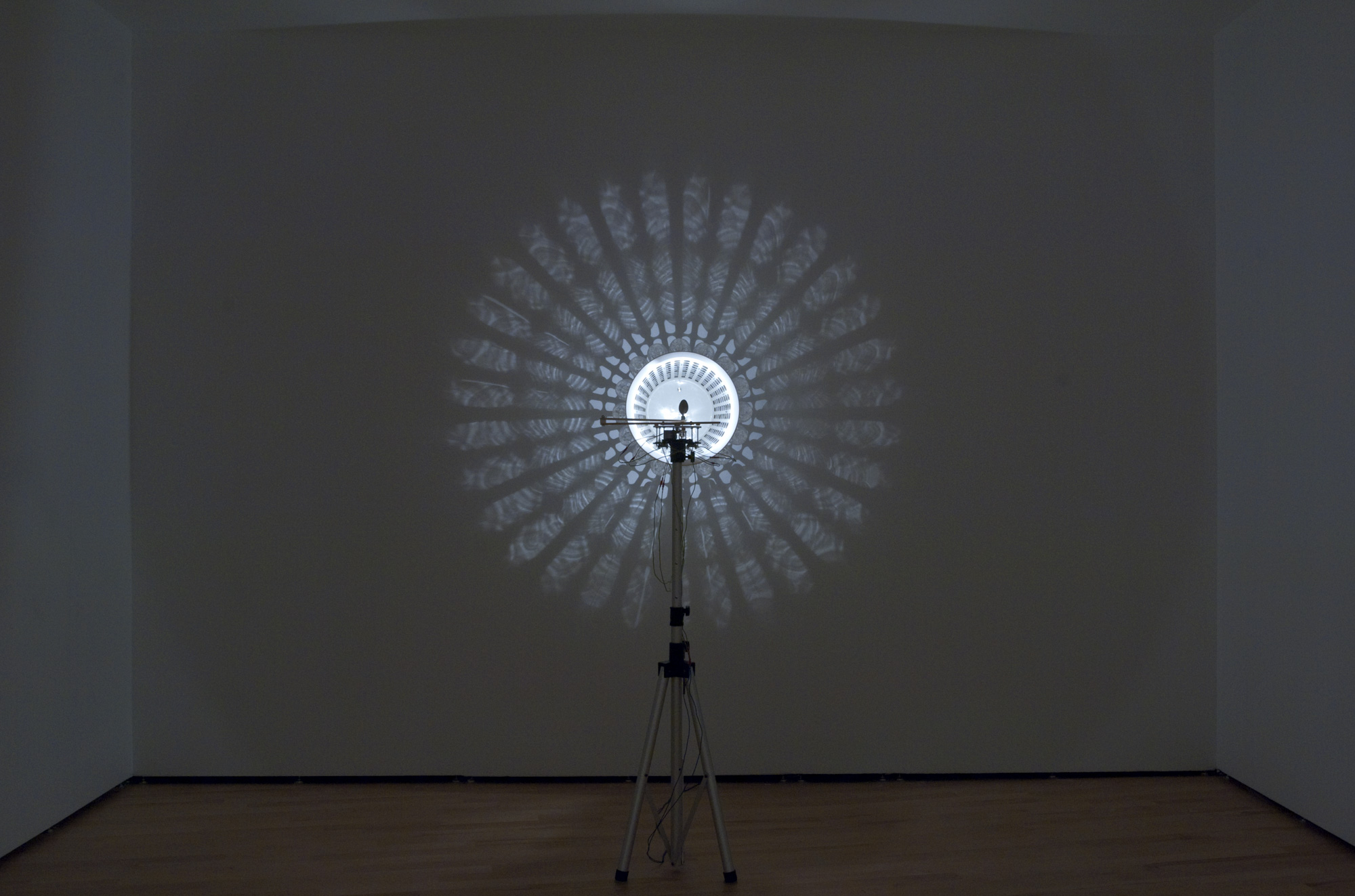
In 1983, when she was twenty-five, Landry left a career in agricultural research to pursue studies in visual arts at Université Laval. She became captivated by Roue de bicyclette (Bicycle Wheel), 1913–64, the first kinetic readymade by Marcel Duchamp (1887–1968), which she discovered in an art magazine. Around the same time, she also encountered the monumental installation Le terrain du dictionnaire A/Z (The Dictionary Field A/Z), 1980, by Rober Racine (b.1956). In this work, Racine meticulously cut out 55,000 words from the Petit Robert French dictionary and mounted them on sticks to cover a 670-square-foot white surface. These formative influences sparked Landry’s playful, surprising creations. Her kinetic works unfold over time, placing the viewer in a state of exhilarating disorientation.
Landry incorporates the bicycle wheel into her installation Chevalier de la résignation infinie (Knight of Infinite Resignation), created in 2009 for the local artist-run centre L’Œil de Poisson. The piece features 237 water bottles attached to 12 wheels, perpetually rotating like the hours of a clock and the months of the year, forming hourglasses of time. In the realm of performance, Brise-glace (Icebreaker), 2013, a two-hour piece, presents Landry rowing frantically over a rolling sea of plastic in a canoe suspended from the ceiling, without ever moving forward. In this way, the artist critiques consumerist societies, poor natural resource management, and the overuse of synthetic materials, which cause irreversible harm to wildlife and soil. She once again used the ubiquitous plastic water bottle in 2023 to create installations with poetic effects of light and movement, evoking rose windows and mandalas, while also symbolizing the overabundance of the modern age.
Landry completed her master’s degree in fine arts at Stanford University, California, in 2006 and has since enjoyed both national and international recognition. In 2007, she became the first recipient of the Giverny Capital Prize, awarded every two years to a Quebec visual artist whose work is innovative but underappreciated. Her work Chevalier de la résignation infinie was featured in the 2012–13 exhibition Oh, Canada, organized by the Massachusetts Museum of Contemporary Art, and has since been shown in several cities across Canada, the United States, France, Belgium, and China. In 2014, Landry received the Jean-Paul-Riopelle career grant from the Conseil des arts et des lettres du Québec. The following year, she was awarded a fellowship from the prestigious John Simon Guggenheim Memorial Foundation in New York.

 About the Author
About the Author
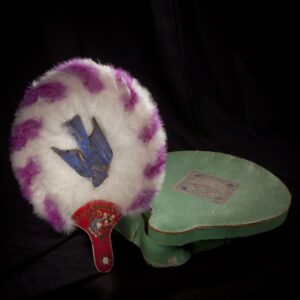 More Online Art Books
More Online Art Books
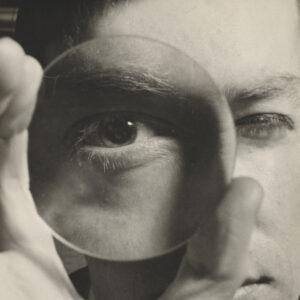 Acknowledgements
Acknowledgements